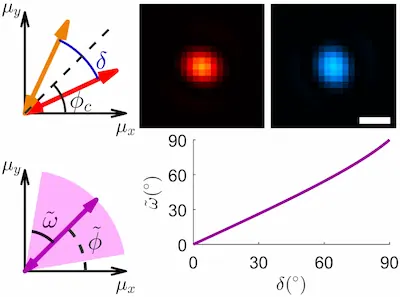We build novel imaging technologies

The Lew Lab builds advanced imaging systems to study biological and chemical systems at the nanoscale. Our technology leverages innovations in applied optics, signal and image processing, design optimization, and physical chemistry. We partner with scientists and engineers across all disciplines to develop technologies to solve unmet needs in science, medicine, and society.
We stand up for science

The Lew Lab is a team of inventors, thinkers, and problem solvers working at the intersection of science and technology.
Creating impactful technology is our passion
Lab news
A new polarized dual-view inverted selective-plane illumination
microscope (pol-diSPIM), coupled with engineering insights
provided by its imaging model, offers an exciting way forward.
Read Matt's commentary, now online in PNAS!
“Painting rich six-dimensional pictures using polarized
fluorescence microscopy” [Open Scholarship]
 Congratulations to Yiyang, whose study is now online in
Phys. Rev. Lett.!
Congratulations to Yiyang, whose study is now online in
Phys. Rev. Lett.!
- Read about how it is impossible for polarization microscopes to
distinguish a pair of molecules from a single molecule: “Resolving the Orientations of and Angular Separation Between a
Pair of Dipole Emitters”
- News coverage from McKelvey Engineering: “In molecular imaging, details matter”
 After a long saga, our study of inhomogeneities within
biomolecular condensates, a collaboration with the
Pappu lab and the
Center for Biomolecular Condensates, is now online in Nat. Phys.! Congratulations and thanks
to Dr. Tingting Wu and Dr. Matt King for leading and persevering
through the process to get this work in print.
After a long saga, our study of inhomogeneities within
biomolecular condensates, a collaboration with the
Pappu lab and the
Center for Biomolecular Condensates, is now online in Nat. Phys.! Congratulations and thanks
to Dr. Tingting Wu and Dr. Matt King for leading and persevering
through the process to get this work in print.
- Read about how tracking single fluorogens enables us to
characterize “dynamic nanoscale hubs” within
condensates: “Single-fluorogen imaging reveals distinct environmental and
structural features of biomolecular condensates”
- News coverage from The Source: “A closer look at biomolecular ‘Silly Putty’”
 We welcome Brian back to the lab for the PhD portion of his MSTP
training!
We welcome Brian back to the lab for the PhD portion of his MSTP
training!